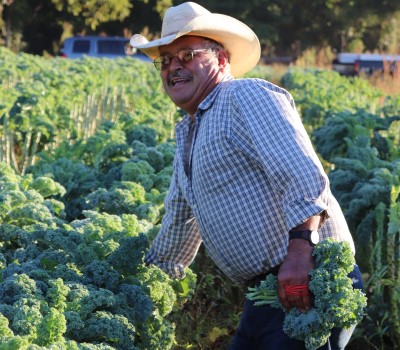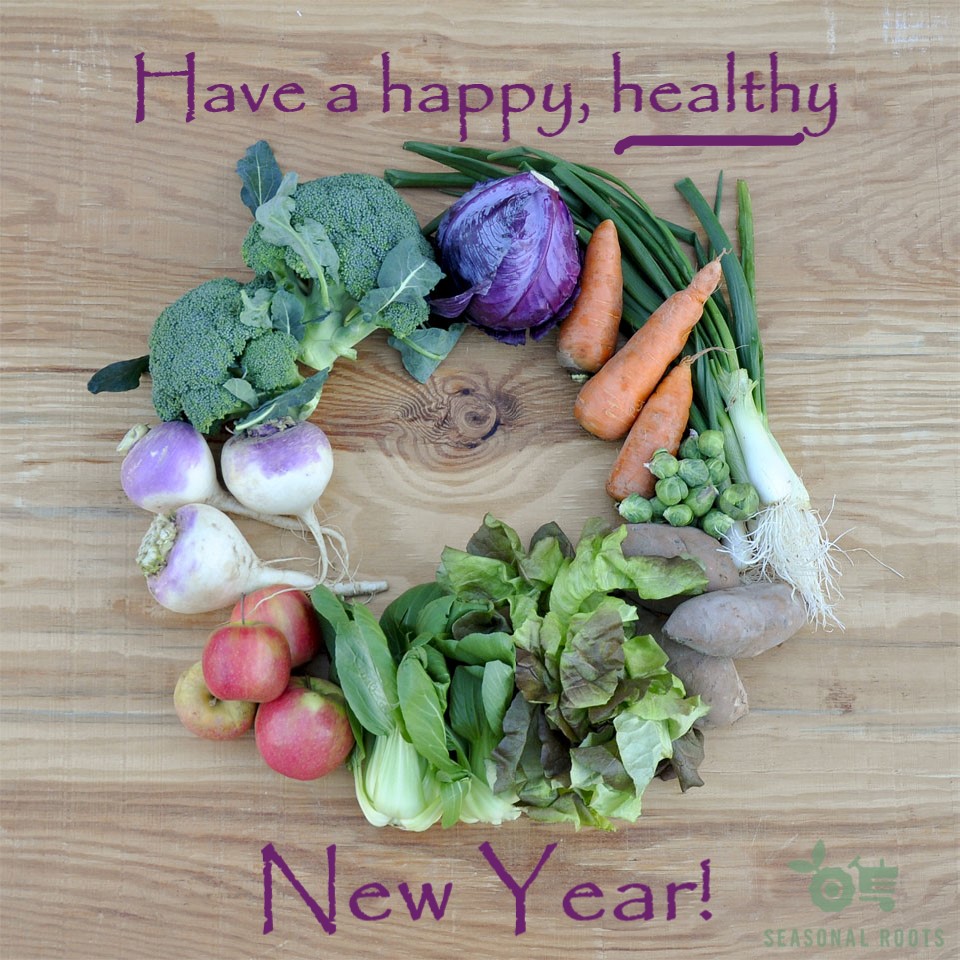Seasonal Eating Guide: WINTER Edition
From your year-round farmers market!
Seasonal eating – eating food that’s locally in season – is the healthiest way to eat. That’s because food that’s grown and made nearby is still fresh and full of nutrients (and flavor!) when it gets to you: spring, summer, fall… and winter, too. Here in the Mid-Atlantic, you can eat seasonally all year long.
It may be hard to believe when cold winter winds are blowing fallen leaves across the frozen ground. But local farmers and food artisans are still farming and preparing delicious local food. And you’re connected to them through the Seasonal Roots online farmers market, delivering healthful local goodness from Dirt to Doorstep® within days of harvest.
To get the most out of winter’s yummy wonderland, check out this year’s Seasonal Eating Guide: Winter Edition. Click on the links below to jump straight to whatever interests you!
IN THIS ISSUE
- What Do Farmers Do All Winter?
- Tips for Boosting Immunity
- Top 10 Coziest Local Foods
- Benefits & Uses of Winter’s Surprising Bounty
What Do Farmers Do All Winter?
If it’s freezing out, it must be… harvest time?
These days the ground’s covered in frost or snow in the morning. The trees are bare. Doesn’t exactly look like harvest time. In fact, most traditional farmers markets have scaled back or closed for the winter.
But not your year-round online farmers market! Seasonal Roots stays open all winter-long because a little dip in the temperature gauge doesn’t stop our farmer partners from farming. They’re still busy making sure there’s plenty of fresh, local food to eat here in the Mid-Atlantic.
Here’s what’s happening down on the farm
Family farmers are still out in their fields gleaning the last of the summer and fall crops like peppers and eggplant. They’re tending to cold weather crops like beets, carrots, parsnips, and greens.
They’re repairing equipment. They’re sowing cover crops like clover and buckwheat to naturally improve soil quality and water management and limit outbreaks of pests and plant diseases.
They’re putting their greenhouses to work to grow more tender produce like tomatoes and basil. Check out that photo if you need proof of the power of a greenhouse. Inside one of the greenhouses on Sion House Farm in eastern Virginia, the McKenney family extends the season for growing crops like local tomatoes… and for wearing shorts!
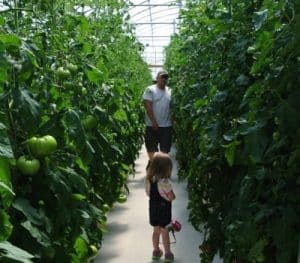
Our farmers who raise animals are busy, too. Their pigs are still foraging, their cows and goats are still producing milk, and their chickens are still laying eggs. Speaking of which…
What’s up with those lighter-colored egg yolks?
Lately you may have noticed that the yolks are a lighter color than usual. Your eggs are still as fresh as ever, and the hens are still pasture-raised. So what’s going on?
The folks at Avery’s Branch Farms explain: “At this time of year the grass quantity starts to be depleted and we start feeding them alfalfa hay. It takes a couple weeks for them to get adjusted to the hay and that causes a few lighter weeks.”
Meanwhile, food artisans are still in the kitchen
Our local artisans’ work spaces are warm and rich with the scents of baking bread, roasting coffee, fermenting kombucha, and chopped cilantro and onions for salsas. From sides to dips to dog treats and more, local food is never out of season.
So there’s still a lot happening in our partners’ kitchens and fields. And that’s why we stay open year-round – to support our local farm families and food artisans. And to help you keep eating fresh, nutritious, local food throughout the year.
But wait! There’s more!
While most of our online farmers market items are local, in the winter we also add regional items. What’s the difference?
First we should explain that there’s no official definition for ‘local food’ or ‘regional food’. Seasonal Roots considers food ‘local’ if it’s grown or made within about 150 miles of our packing hub. We call it ‘regional’ if it’s outside that range but can still get to us within a day or so of harvest without flying – things like oranges from Florida.
Any further than that and it isn’t fresh enough, nutritious enough or flavorful enough, and probably comes with a bigger carbon footprint, too. Click here to read why local — and regional — produce is better for you.
One thing you’ll never see in our market is anything from New Zealand, or even California. (And nothing grown by Big Industrial Agriculture, either. We partner with family farmers only.)
What if I want to eat local food only?
When you’re shopping our online farmers market, you never have to guess because we always tell you where it was grown by which family farmer.
That’s important, because some of our members take satisfaction in eating only what nature can provide in season here in Virginia. They keep all their food dollars local and avoid things like tropical fruits that don’t grow this far north. After all, humans survive just fine on different diets the world over.
Other members enjoy the variety that regional options offer, especially in winter. When snow’s on the ground, they’re willing to go a little farther afield to enjoy produce like oranges grown by family farmers in Florida.
Seasonal Roots is here to support your choice, whether you choose to eat 100% local or occasionally go regional. We always make it clear where each item in our online farmers market is grown or made. That way you can choose the food that’s right for you, good for you, and still good for our planet, too!
Tips for Boosting Immunity
‘Tis the season for gathering indoors and sharing germs – so a strong immune system is a really important part of staying healthy! Here are some tips on how to boost your immune health this winter… and all year long.
Start with fresh local foods full of immunity-boosting nutrients
- Beta-carotene is in sweet potatoes, spinach, carrots, broccoli, and tomatoes.
- Vitamin C is in citrus fruits, berries, melons, tomatoes, bell peppers, and broccoli.
- Vitamin D is in fatty fish and eggs, milk, and 100% juices that have been fortified with vitamin D.
- Zinc is easier for your body to absorb from foods like beef and seafood, but it’s also in wheat germ, beans, nuts, and tofu.
- Probiotics are good bacteria that are in cultured dairy products like yogurt and in fermented foods like kefir and kimchi.
- Protein is in animal products including milk, yogurt, eggs, beef, chicken, and seafood, as well as plant-based foods like nuts, seeds, beans, and lentils.
Stay well-fueled
Don’t skip meals. According to the Mayo Clinic, your body needs a steady supply of fuel.
- Aim for 5-9 servings of fruits and veggies every day, whether you eat them as snacks, sides, or entrees.
- Freshly harvested local produce is the best source for the nutrients you need to build a healthy immune system – much better than vitamin or mineral supplements. Even grocery store produce falls short because it’s not as fresh as Seasonal Roots produce, which is delivered within days from Dirt to Doorstep®. The nutrients in grocery store produce, on the other hand, are already fading by the time you get it home.
- For fresh fruit, one serving is a single medium-sized fruit, or one cup of berries or melon, or half a cup of canned fruit packed in its own juice.
- For veggies, one serving is half a cup cooked or one cup raw.
Hydrate!
Drink lots of fluids, especially water. Milk’s another good-for-you liquid, especially when it comes from humanely raised cows who are hormone-free and eat non-GMO feed. So are apple cider and 100% juices, freshly squeezed. Broth is good, too. Even sustainably grown, fair trade coffee counts as a healthy fluid – coffee lovers rejoice!
So is kombucha! What’s kombucha, you ask? The Cleveland Clinic explains:
- Kombucha is fermented from tea (usually black, sometimes green) and sugar (perhaps white, turbinado, agave, or honey).
- The result is a slightly fizzy drink that’s full of probiotics, which means it contains live bacteria and yeasts that are beneficial and useful for your digestive system.
- Its health benefits are similar to fermented foods like yogurt, kefir, and raw fermented pickles. Plus there are bioactive compounds that can only be found in kombucha. It’s got polyphenols, too, which are strong antioxidants that reduce inflammation. It also provides B vitamins and essential minerals.
Sleep more, stress less
Get a good night’s sleep and manage stress in healthy ways.
- Adults should get 7-9 hours of sleep each day, while kids need 8-14 hours, depending on age.
- Manage stress by meditating, listening to music, journaling, and engaging in physical activity – do some yardwork, dance, play with the dog, or go for a walk or a jog.
Last but not least: Be stingy with the germs
In this season of sharing and caring, the one thing you don’t want to share is germs. Wash your hands. Wash your produce just before you use it. Wash utensils and dishes to reduce the spread and growth of bacteria.
Put it all together and your immune system will thank you!
Top 10 Coziest Local Foods
According to our totally scientific veggie fairy survey, the following local foods are absolutely guaranteed to inspire you to cook up your coziest winter ever!
#10 – Kale Chips
Stretch out on the couch with a salty, crunchy bowlful and watch a good movie.
#9 – Southern-Style Collards
Cook up these greens with onions, hamhocks, and vinegar just like southern nanas have been making it since forever.
#8 – Black-Eyed Peas
For the traditionalist, this downhome legume is a must to ensure a prosperous New Year. In fact, we veggie fairies eat them all winter long. Not that we’re superstitious or anything.
#7 – Stuffed Acorn Squash
Chock-full of dried fruits, nuts, maybe some quinoa and sausage. It’s enough to make any cold winter night a special one.
#6 – Mulled Cider
Warm your insides with a concoction that takes apple juice to a whole ‘nother level – cider awash in the flavors of cinnamon, cloves, allspice, and brown sugar. Goes down easy!
#5 – Sweet Potato Pie
So much more flavorful than the pumpkin version! A flakey crust, a dollop of whipped cream, and a cup of hot coffee. The perfect way to end a meal…. or start your day, if you’re a pie-for-breakfast kind of person!
#4 – Butternut Squash Soup
When the weather outside is frightful, there’s nothing like a bowl of this hot, thick, creamy soup loaded with sweet and savory flavors.
#3 & #2 Vegetarian/Vegan Chili & Beef Stew
This one’s a tie! Both are savory, rich, flavorful, and stick-to-your-ribs satisfying. And they make great leftovers. Take a steaming thermosful to work or school and it will transport you to an overstuffed chair by a crackling fire – so long as you serve it with…
#1 – Warm Crusty Bread
Without this number one local food, even the coziest soups, stews, and chilis should just stay in the fridge. Crunchy on the outside, soft and warm on the inside, topped with melting butter – seriously, need we say more?!!
So what are your favorite cozy food traditions? Share them with us on Facebook or Instagram!
BENEFITS & USES of Winter’s Surprising Bounty
Below are some of the health benefits of seasonal eating. Even in winter, it’s amazing how much local produce farming is still going on! Most of it is grown in local fields and greenhouses. Some is grown further south, but still in our region.
Because all our produce is harvested nearby for home delivery, it’s packed with nutrients and flavor and really good for you. Much better than produce that has to travel a long way to the grocery store.
Need some inspiration for turning all this local bounty into fresh, delicious meals? Check out some of the Seasonal Roots team’s favorite recipes HERE.
BEETS
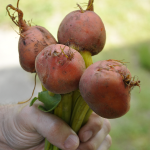 BENEFITS: Vitamin C, folate, potassium, magnesium, with antioxidant and anti-inflammatory properties.
BENEFITS: Vitamin C, folate, potassium, magnesium, with antioxidant and anti-inflammatory properties.
USES: Roast alone or with other root veggies as a side, or add to salads. Add to baked goods, like beet brownies, as a sweetener.
HARVEST: Year-round
BRUSSELS SPROUTS
 BENEFITS: Vitamin K, plus folate and iron.
BENEFITS: Vitamin K, plus folate and iron.
USES: Serve as a side or atop salads and meats, steam or roast, serve with salt or add tangy or savory sauces like balsamic vinegar.
HARVEST: September-March
CARROTS
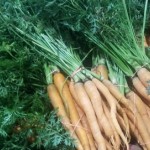 BENEFITS: Vitamin A, potassium, lutein, with antioxidant properties.
BENEFITS: Vitamin A, potassium, lutein, with antioxidant properties.
USES: Delicious raw or supercharge the sugars by roasting or grilling. Add to stews and soups. They even sweeten up baked goods like carrot cake.
HARVEST: Fall, winter, spring
KALE, COLLARDS, HYDRO BIBB LETTUCE, MICROGREENS
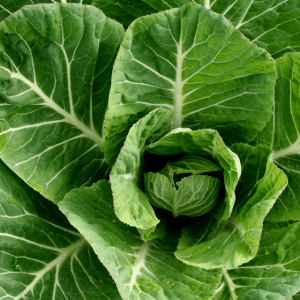 BENEFITS: Vitamins A, C, K, iron, and disease-fighting phytonutrients.
BENEFITS: Vitamins A, C, K, iron, and disease-fighting phytonutrients.
USES: Raw in a salad or smoothies, steamed as a stand-alone or baked into other dishes. Cooking makes it easier for our bodies to digest its nutrients.
HARVEST: Year-round, but it gets sweeter after the first nip from Jack Frost
LEEKS
 BENEFITS: Vitamin A, C, K, potassium, lutein, with antioxidant properties.
BENEFITS: Vitamin A, C, K, potassium, lutein, with antioxidant properties.
USES: Add this member of the onion family to stews, stuffings, and stir fries, or serve as a stand-alone side.
HARVEST: September-April
PARSNIPS
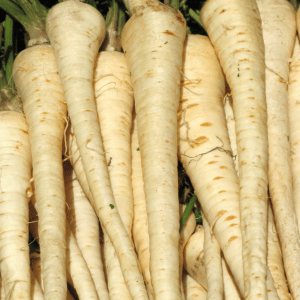 BENEFITS: Potassium, fiber.
BENEFITS: Potassium, fiber.
USES: Sweeter and nuttier than carrots, roast alone or with just about every other fall vegetable.
HARVEST: October-April
RUTABAGAS
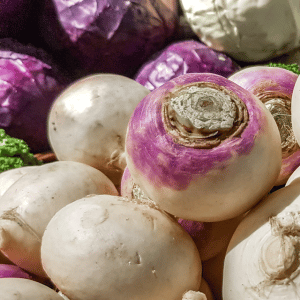 BENEFITS: Vitamin C, fiber.
BENEFITS: Vitamin C, fiber.
USES: Like a cross between a turnip and a parsnip, delish in casseroles, or puree with turnips and carrots for soup, or roast with ginger, honey, or lemon.
HARVEST: October-April
SWEET POTATOES
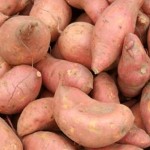 BENEFITS: Vitamin A, iron, with anti-inflammatory properties.
BENEFITS: Vitamin A, iron, with anti-inflammatory properties.
USES: Roast like a potato or cut up like fries, add to salads and stews, puree into soups. Best of all: Sweet potato pie!
HARVEST: September–December
TOMATOES (greenhouse)
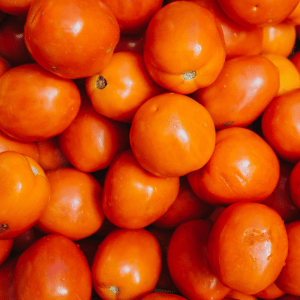 BENEFITS: Vitamin C, beta-carotene, potassium, phosphorus, with antioxidant properties.
BENEFITS: Vitamin C, beta-carotene, potassium, phosphorus, with antioxidant properties.
USES: Add to salads, sandwiches, sauces, stews, stir fries, kabobs, pizza, or just enjoy them plain with a little salt.
HARVEST: Year-round
TURNIPS
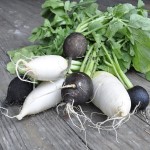 BENEFITS: Vitamin C (roots), vitamins A, K, folate (leaves).
BENEFITS: Vitamin C (roots), vitamins A, K, folate (leaves).
USES: Steam, roast, or boil the roots. Flavor with fennel, bread crumbs, or brown sugar. Adds a slightly bitter complement to sweet parsnips, carrots, or mashed potatoes — or mash them alone. Steam or stir fry the leaves.
HARVEST: September–April
WINTER SQUASHES
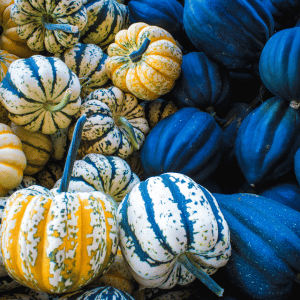 BENEFITS: Omega-3 fatty acids, vitamin A.
BENEFITS: Omega-3 fatty acids, vitamin A.
USES: Acorn, butternut, delicata and more have thick skins, and can be stored for months. Bake, steam, or roast plain or with cinnamon and ginger, add to salads and stews, puree into soups.
HARVEST: October–February
PLUS REGIONAL WINTER PRODUCE
 CITRUS (Oranges, Grapefruits, Tangerines): Rich in vitamins C, B, potassium, phosphorus, magnesium, with antioxidant and anti-inflammatory properties.
CITRUS (Oranges, Grapefruits, Tangerines): Rich in vitamins C, B, potassium, phosphorus, magnesium, with antioxidant and anti-inflammatory properties.
Also: Cucumbers, Peppers, Yellow Squash, Zucchini packed with vitamins A, C, E, K, magnesium, potassium, manganese, beta-carotene, and more.
Try This Easy NEW YEAR’S RESOLUTION: Eat Healthy in 2023!
(Hint: You can make or renew this resolution any time of the year.)
Healthful seasonal eating is simpler than you think. Click here to explore how to keep it easy-peasy.
Use code WINTER23 to join for FREE until 1/15/23!
About Seasonal Roots
Since 2011, Seasonal Roots’ online farmers market has connected Virginia families with local family farmers who use sustainable, humane practices. Our neighborhood market managers – who believe in living better through scrumptious, healthy eating, being kind to animals, protecting the environment, and spreading joy – home-deliver freshly harvested produce, pastured eggs, grass fed dairy and meat, plus artisan fare. We empower our members to eat better and live better with more nutritious, flavorful food that’s good for us and good for the planet. More info at seasonalroots.com.

